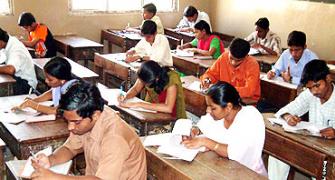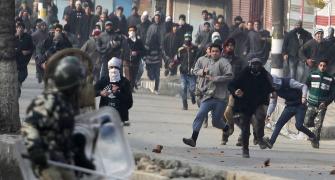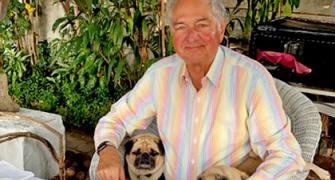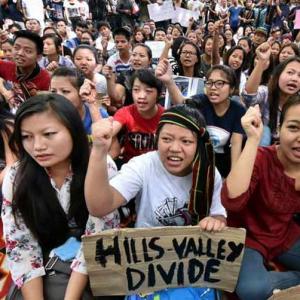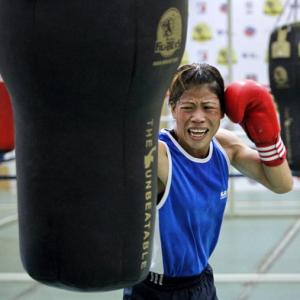The church bells don't toll in Churachandpur any more.
The hill district in Manipur has been in mourning for more than a year.
Nitin Sethi reports on the nine dead, the three Bills and a state singed by clashes over identity and territory.
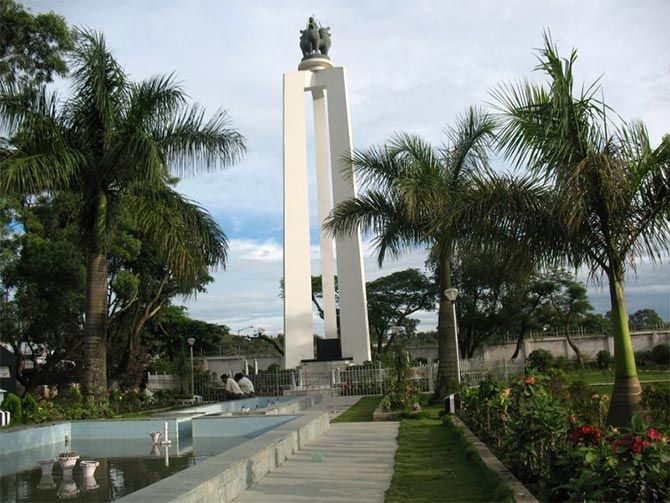
The youngest of the nine boys was 10. Now they are all dead, lying next to each other. Unburied. For more than a year.
Their bodies are kept inside the refrigerator that was recently installed in the bare-bone morgue at the back of the district hospital.
Over two days, six of them were shot dead by the police. Three died of burns and injuries.
Just outside the morgue, nine symbolic empty coffins serve as a shrine to the dead. Many people from the town, besides members of the bereaved families, gather every day around it, all day and late into the night.
To protest, pray, keep vigil, express solidarity and mourn. Protest and praying points, posters and reminders dot the rest of the town too.
This town in mourning is Churachandpur, a small valley and the headquarter of the southern hill district, also called Churachandpur in Manipur.
It is home to the Kuki-Zomi tribal people. The tribe, predominantly Christian, usually call the town by its old name, Lamka.
On August 31 last year, a young and angry mob burned down the homes of five local MLAs -- one of them a senior minister in the state. They claimed the politicians had not protected their interests when the state assembly passed three Bills.
"A friend of Paulianmang came over and told that the MLA's house in our locality had been torched. He went out to see. Messages on the local WhatsApp group poured in. Someone had been shot down by the police. I came to know it was my son," says Ngaikhanching, his mother, a widow.
Paulianmang was 22. He worked part-time at a nearby school to pay for his siblings' education. He was the first to die.
The WhatsApp message spread like wild fire across Lamka.
Next day, people came out in large numbers to take part in unarmed protests. By the end, nine were dead.
People refused to bury their dead in anger. Lamka turned into a mass of protest.
"For me, justice will be served when the three Bills are taken back and those who killed my son are given befitting punishment," says Ngaikhanching.
All the bereaved, gathered at the morgue have similar demands: either Sixth Schedule status for the hill district under the Constitution or withdrawal of the three Bills or exclusion of Churachandpur from their purview. And, justice.
Geographically, about 10 per cent of Manipur is a valley, traditionally home to the Meitei community. The other 90 per cent -- the hills -- are home to tribes from the Naga and the Kuki-Zomi groups.
Churachandpur is home to the Kuki-Zomi people who also inhabit areas in Myanmar and Mizoram.
A porous hill region, historically open to fluid migration of tribes, Manipur has seen its people struggle since it got fenced by freshly minted political boundaries, first by the British and then by the State of India.
As a result, strong currents of identity-centric sub-nationalism and insurgent movements have kept the state on the edge. The impunity provided to the state's armed forces and the manoeuvres of the political class and intelligence agencies to manage India's 'frontier,' coupled with the racism people from the region face in the mainland, have left generations alienated from India.
This, even as the support for insurgent groups has relatively dwindled, fuelled by degradation of the insurgencies' ideological base and rising aspirations of the new generation for peace and opportunities amid a fallow economy.
The hills, especially devoid of development over decades, blame both the Centre and the valley (which today dominates the electoral-democracy system) for its neglect, and seek political separation to different degrees.
The valley, surrounded by the hills, feels it is under a siege and wants to retain Manipur's political integrity.
The Meitei community has seen fertile paddy fields slowly turn into a dusty and congested semi-urban landscape.
As the agrarian economy withers away, job alternatives for the new generation continue to be the fast-saturating government employment and state patronage.
The influx of even more marginalised tribals down into the valley, gaining slowly from the scheduled tribe status they enjoy, miffs the people in the valley; the Meitei people are not allowed to buy land in the hills under a special Constitutional provision.
The Meitei, a majority of whom converted to Vaishnav Hinduism in the 17th century, enjoy scheduled tribe status
Against this backdrop, state Chief Minister Ibobi Singh, pressured by the agitation in the valley that also left one child dead, got three Bills passed in the state assembly. The valley had demanded protection against migrants.
"The three Bills were drawn without consultations with us in the hills. In the name of checking migrant influx from the plains, they target the tribal people and their lands," says Mangchinkhup, chief convener of the Joint Action Committee, the main civil society group spearheading the protest in Churachandpur.
One of the Bills set the definition for Manipur domicile: 'Persons of Manipur whose names are in the National Register of Citizens, 1951, Census Report 1951 and Village Directory of 1951 and their descendants who have contributed to the collective social, cultural and economic life of Manipur.'
"We all know back in 1951 what the level of literacy in the tribal hills was. Who kept the registers then? And, what does it mean to have contributed to the social and cultural life of Manipur? This will leave out many of us tribals," says an agitated Mangchinkhup.
He points to another law that, in his view, loosens the regime restricting the Meitei in the valley from buying lands in the hills. "The valley people are also trying to equate themselves with us hill tribals through the three laws and consequently seek the scheduled caste status," he says.
"It is about our identity, our territory. All we have is our land. There cannot be any compromise," says Muamuan Zomi, the 23 year old who turned leader after he, along with some others, dedicated his nights to keep the bodies from rotting -- constantly ensuring fresh ice slabs with bottle gourds to kill the stench -- till the local administration got a refrigerator for the morgue. He now heads the youth group, All Tribal Movement of Lamka.
Pradip Phanjoubham, editor of the Imphal Free Press newspaper, believes the chief minister, also a Meitei, likely thought the troublesome bits of the three bills would eventually be blocked by the governor and he could later claim that he had done his bit.
He recognises the desire of the Meitei to also seek scheduled tribe status as the Naga outfit NSCN-IM comes closer to a pact with the Government of India.
If this was the intention of the government, the cynical move backfired, as the hills took to agitation.
The governor referred the three Bills to the President, who has to now act on the advice of the Union government. Of course, the Bharatiya Janata Party wouldn't mind finding a solution that also helps tip out the Congress government in the state -- like in Arunachal Pradesh. The Bills have been pending with the President while the dead bodies lie in the morgue.
"This is not just about the Bills. It is also a movement against our own corrupt tribal political leadership. For the first time, Churachandpur has witnessed youth groups, women groups and other civil society all rise up -- without taking up arms. It has also united the hill tribes," says Benjamin Vualnam. He came back from Mumbai after his post graduation and is now part of the 'movement.'
Mobilisation, gatherings, prayers, protest and late night congregations continue across Lamka. Alongside, money is being collected by people to themselves build a 14-km highway stretch connecting Churachandpur to Mizoram and Myanmar -- an artery that shall leave the hills less dependent on supplies from the Imphal valley.
"One doesn't know how this will resolve, but one thing is certain after this people's movement, Churachandpur will not be the same again," says a senior priest who does not want to be named.
All churches, cutting across denominations, put their bells on silence to mourn the dead. But the unity between the tribes of Churachandpur is fragile and has been tested in the past few months.
Phanjoubham acknowledges some parallels to the recent reservation-centred troubles in Gujarat and Haryana -- an aspirational new generation of a historically dominant community feeling marginalised in the changing economic-scape. Social upheaval of a similar kind is palpable in Manipur as well.
IMAGE: Sahid Minar in Imphal, the capital of Manipur. Photograph: Kind courtesy, Beejen/Creative Commons. Kindly note: Image published only for representational purposes.



